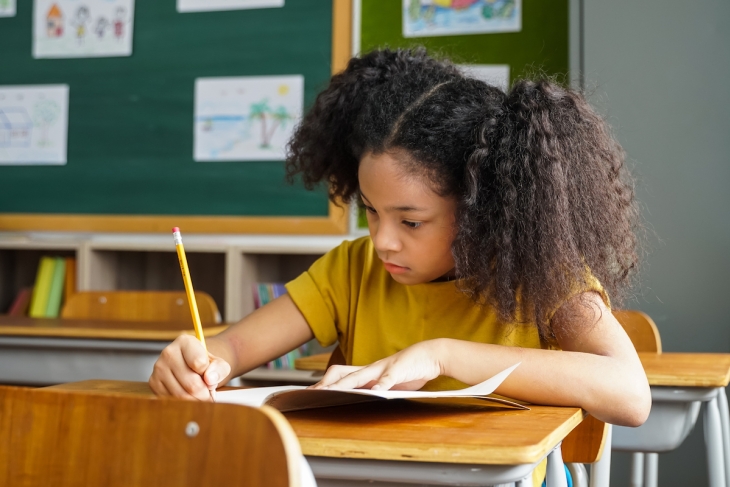When I die, I want my gravestone to read: “She insisted on double-checking.” Double-checking, and other academic behaviors like re-reading questions to make sure you understand what they are asking, are our secret sauce at Success Academy, the charter school network I founded and lead. We call these behaviors “effort,” and we teach and celebrate them religiously in our schools. We are convinced they are one of the most powerful drivers of student achievement.
This conviction is based on more than intuition. Over seventeen years of educating tens of thousands of students, careful analysis of homework, classwork, and assessment data has taught us that a large proportion of errors, up to 70 percent, don’t result from not knowing or understanding the content, but from lack of care and attention to detail. Among SA scholars who did not meet proficiency on the 2022 New York state tests, for example, virtually half failed because of careless errors—not because they didn’t know the material!
Unfortunately, educators routinely overlook the importance of student effort. This oversight is particularly significant as the country grapples with how to address pandemic-related learning loss. When our SA scholars returned to in-person school, they did have content gaps, but their atrophied “effort muscle” was a bigger problem. The same is likely true across the country, yet the issue is notably missing from discussions on how to help students catch up.
At Success, rebuilding our students’ effort capacities has been a core focus since we returned to our school buildings. It starts with changing teachers’ mindsets about the role they play. Too often, teachers treat effort as something they have no influence or control over. They don’t look out for it, and they don’t focus on it as a root cause of underperformance in their classrooms. Instead, they tend to assume that when students get things wrong, it’s because of knowledge gaps, so they end up spending a tremendous amount of instructional time re-teaching content scholars already know. This is frustrating for teachers and boring for students. It also sets off a vicious cycle: Students come to expect re-teaching and don’t exert themselves when they learn things the first time.
When the teacher approaches everything through the lens of effort, by contrast, this dynamic shifts. In reviewing a homework assignment, for example, she may notice that many students got a question on fractions wrong. Instead of assuming she has to re-teach fractions, she studies her students’ incorrect answers. She notices that the errors stem mostly from the fact that the question had two parts and her students impulsively leaped to answering the first part. They may have answered this first part correctly, proving they understand fractions, but because they didn’t take time to understand what the question was asking, their answer was wrong.
With this accurate diagnosis, the teacher focuses homework debriefing the next day on the real issue: effort. She models what it looks like to read and conceptualize the question thoroughly before jumping to solve it. She simultaneously affirms scholars’ capacities—“you know how to do this!”—and walks through how to put forth effort at the front end so they are able to consistently demonstrate that knowledge.
Increasing students’ effort requires this kind of attention and follow-up in every part of the school day. Teachers must live and breathe the expectation that scholars can get right what they already know how to do, and be absolutely consistent in holding them accountable. The formula sounds simple, but it is challenging. Insisting can feel uncomfortable and even “mean” when teachers first try it—usually because they don’t believe their students can meet the expectation. When teachers “go for it,” however, belief soon follows.
Going for it means not only having routines for double-checking and redoing careless work, but also asking students to rethink and try again in classroom discussions when they don’t respond to the question asked, don’t use evidence and reasoning, or repeat exactly what their peers said instead of building on an idea. In such classrooms, students’ behavior shifts quickly and dramatically. They rise to meet the expectation and become focused and highly engaged. They come prepared because they know their lesson moves fast and builds on what they’ve already learned.
In hundreds of our classrooms over the years, we have watched this happen. There is nothing quite as wonderful as witnessing the “aha!” moment that teachers have when they realize that, by changing their behaviors and insisting on effort, they have unleashed capacities in their scholars that they didn’t think possible. It’s empowering for educators and empowering for kids—and as a highly effective and free tactic for accelerating learning, it’s a strategy I urge every educator to embrace.




